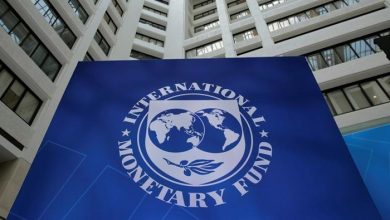New rules to protect dormant deposits

The Bank of Ghana last week unveiled new regulations that address the sometimes controversial issue of inactive deposit accounts. Up till now, deposit-taking institutions have been allowed to apply their own definitions of what constitutes a dormant account and what to do with accounts they classify as dormant, and this has sometimes led to disputes between financial institutions and their customers.
However, the new directives released last week establish statutory processes and procedures for classifying an account as dormant and consequently, how such accounts are to be handled.
The new directives draw authority from section 92 of the Banks and Specialized Deposit-Taking Institutions Act of 2016 (Act 930) and are applicable to universal banks, rural & commercial banks, savings and loans companies, deposit-taking finance houses as well as micro-finance institutions.
The objectives of the directive are to operationalize Section 143 of the Banks and Specialized Deposit-Taking Institutions Act, 2016 (Act 930); establish processes and procedures for reclaim of funds by dormant account holders or their legal representatives, and ensure that funds of customers of regulated financial institutions that become dormant are adequately protected.
However, the new directive will not be applicable to accounts that are subjects of litigation; subjects of fraud investigations by a regulatory authority or law enforcement agencies; subjects of any encumbrance including but not limited to liens and collaterals; or in credit due to errors including system errors and are consequently under investigation for correction.
Basically, a deposit account – whether savings or current account – or a prepaid card account becomes classified as dormant if it has not been operated by the account holder or legal representative for two years, this being termed in the directive as “customer-initiated activity”.
Similarly, a fixed deposit or investment account becomes dormant if it has not been operated for two years after maturity, although if the customer has left standing roll-over instructions it only becomes dormant if it has been rolled over three consecutive times and the customer has not responded to efforts by the financial institution to make contact.
The BoG’s definition of customer-initiated activity covers includes cash or cheque deposits, withdrawals, transfers to or from the account including standing orders, direct debit/credit, and payments out of the account made by the account holder or their legal representative.
Conversely, though it does not include regular or automated inflows such as interest payments that accrue on the account and bank charges.
Importantly, financial institutions must not allow a third party withdrawal from an account that has received only inflows for a period of two years without contacting the account holder. This regulation is meant to ensure that money is not taken out of an inactive account by anyone other than the account holder.
Once an account exceeds this specified time threshold, it must be put on a dedicated dormant accounts register by the institution holding the deposit, although the institution is obliged to try and reach the customer with notification of impending dormancy at least three months before the time threshold is reached.
Where an account becomes dormant and the balance is less than an amount determined by the Bank of Ghana, (apparently that threshold has not yet been decided on) the financial institution must either transfer the account to the dormant account register or close the account after due notice to the customer of the decision to close the account and transfer funds to the customer or the Bank of Ghana where the customer could not be reached.
But if a customer has multiple accounts in a particular institution and at least one other account is active the inactive account(s) will not be deemed inactive although the customer must be formally reminded about the inactivity of the account not being actively operated.
Importantly, accounts classified as dormant would not attract any interest, although they will remain covered by deposit insurance. A process for reactivation of a dormant account – which will differ from one financial institution to another – would apply if the customer reappears within three years of the account being put on the dormant accounts register.
However, a further three years after being declared dormant and put on a dormant accounts register, the amount in a dormant account must either be refunded to the customer – if the customer can be reached – and if not it must be sent to the BoG, where the customer can only reclaim it after a validation process has been completed.
Before this happens though, the new directive exhorts the financial institution to track down the account holder or if that fails, the next of kin. States the directive:
“A regulated financial institution shall contact the “Next of Kin” or other designated person of the Dormant Account Holder where efforts to locate the Dormant Account Holder prove futile. In an effort to locate a Dormant Account Holder, a regulated financial institution shall not disclose the account balances and any other sensitive information to any third party. In all instances of establishing contact with a Dormant Account Holder or Next of Kin or designated contact person, all associated costs shall be borne by the regulated financial institution.
During this time a financial institution shall allow credits paid into an account classified as dormant but in accordance with section 143(1) of Act 930 shall not permit a withdrawal until the account is reactivated.
The new regulations are comprehensive in scope, even setting out reporting requirements of deposit-taking financial institutions both on their own websites and in national newspapers, hard copy and digital editions inclusive.
Expectedly, the new directive will put to rest what has been a knotty issue on several occasions.









